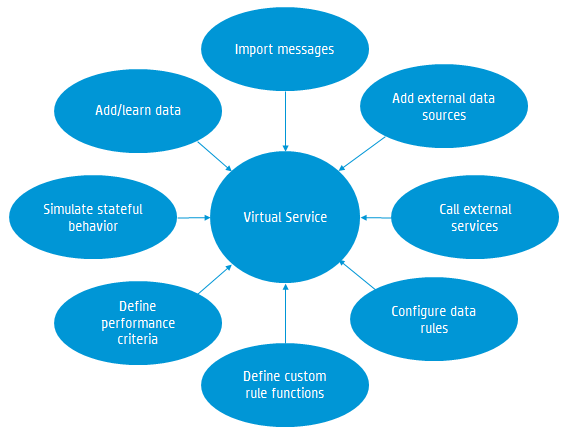Simulation modeling
Simulation models define the functional and performance behavior that the virtual service supplies during simulation. You can manually customize simulation models, or put the virtual service in Learning mode to record real service behavior and performance. This learned data is then added to the virtual service's models, for use during simulation.
When you create a virtual service, Service Virtualization creates a data model and a performance model, and links them to the virtual service. These models serve as the default models for learning and simulation sessions. You can associate each virtual service with multiple data and performance models. Prior to a learning or simulation session, you can select which data and performance models to use.
-
Data Model
The Data Model enables you to record actual requests and responses for a real service and then use this data for simulation using a virtual service. You can create and customize the data model to meet your needs. You can use recorded data as a basis for your data model, and also add new learned data, add service calls, and model stateful behavior to simulate a service where the order of requests is important. You can also add custom data, or add data from an external data source. This enables you to model the interaction between the service under test and the simulated service to meet many integration test cases. For details, see Data modeling.
-
Performance Model
The Performance Model enables you to record the performance for a real service and then use this as a model for a virtual service. You can customize the performance criteria of the model to meet many performance use cases. For details, see Performance modeling.
Customize your simulation models to modify virtual service behavior:
Click a shape for more information.

 See also:
See also:













